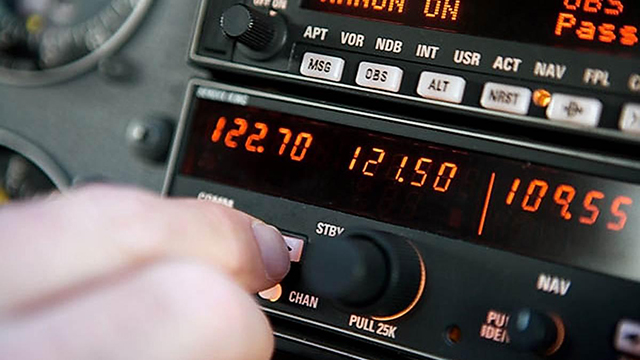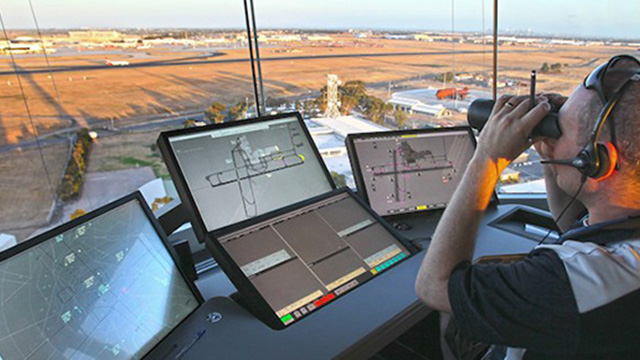
UNICOM Service
Participation in UNICOM services is limited to the exchange of radio messages concerning:
(a) confirmation of the CTAF frequency selected by aircraft;
(b) general aerodrome weather reports;
(c) aerodrome information;
(d) estimated times of arrival and departure;
(e) passenger requirements;
(f) aircraft refueling arrangements;
(g) aircraft parking requirements;
(h) unscheduled landings by aircraft.
UNICOM (UNIVERSAL COMMUNICATIONS)
Oz Airports is Australia’s premium provider of UNICOM (Universal Communications) services to aerodrome operators. UNICOM services are usually provided for events such as general aviation fly-ins and circumstances where increased airport activity requires the airport operator to enhance coordination between aircraft and ground staff.
Oz Airports has extensive experience in the provision of these services in events such as AOPA annual meetings and the Birdsville races. Our staff are highly qualified former air traffic controllers / flight service operators who provide a professional service.
UNICOM services are non-ATS radio communication services provided on CTAF (common traffic advisory frequency) to enhance the value of information normally available about a non-controlled aerodrome.
Oz Airports UNICOM services greatly enhance the safety and efficiency of Aerodromes during times of increased aircraft movements and activity.
Oz Airports UNICOM services comply with the requirements of Civil Aviation Regulation (CAR) 83 (2).
A UNICOM service is not a certified air/ground radio service as it does not provide a directed traffic information service. The primary function of the frequencies (CTAF) used for UNICOM services is to provide the means for pilots to exchange traffic information for separation purposes.

CA/GRS Information
The Certified Air/Ground Radio service (CA/GRS) must provide the information service as specified below, by broadcast on CTAF (common traffic advisory frequency).
The information service will be provided to all arriving, departing, and overflying aircraft which call on CTAF. The information will be broadcast to aircraft following the receipt of the arrival, departure, or overflying broadcast, or otherwise on request.
The following are the elements which the service shall provide:
A. Frequency Confirmation. A voice response by the CA/GRS will confirm each aircraft’s radio operation and the correct frequency selection.
B. Air Traffic Information. The CA/GRS operator must provide traffic information of known, relevant, aircraft operating in the terminal airspace (arriving, departing, overflying) that have advised their presence on the aerodrome frequency, or which otherwise have been observed by the operator. The traffic information is to include the aircraft call sign, type, present operating situation and intention. This information will assist pilots in "arranging alerted see and avoid separation” via aircraft to aircraft communication. The CA/GRS operator does not arrange separation.
C. Aerodrome Weather Information. The CA/GRS operator must advise of prevailing weather at the aerodrome. This includes wind speed and direction, runway favoured by wind, runway surface condition, QNH (Query: Nautical Height), temperature, and estimated cloud base and visibility.
D. Emergency Services Alerting. The CA/GRS will provide a telephone contact to civil services for emergency alerting in the event it is needed. The operator will notify local emergency services by telephone on request, or if the operator assesses that an emergency situation exists.
E. Other Advice. The CA/G radio operator will not normally communicate with aircraft for any reason other than the above purposes. However, on request by a pilot, or when the operator considers it prudent, a course of action may be suggested by the operator.
Certified Air/Ground Radio Service (CA/GRS)
As air traffic density and complexity around airports increases, so does the risk profile at that airport. The Civil Aviation Safety Authority (CASA) monitors the risk levels at key regional airports through regular aeronautical studies. As the risk profile approaches a number of risk criteria, CASA will typically recommend the introduction of an air traffic service at the airport. Such a service can range from a Certified Air/Ground Radio Service (CA/GRS) through to a full Air Traffic Control service provided by Airservices Australia.
The implementation of Air Traffic Control at an airport can cost millions of dollars per annum and these costs are passed onto air operators utilising that airport by Airservices Australia. The introduction of Air Traffic Control can also lead to some airspace users being unable to operate in the controlled airspace around the airport, meaning airport based maintenance business and flying schools can be financially disadvantaged or even close, given that the aircraft they either repair or operate are excluded from the airspace.
CA/GRS provides a cost-effective solution to mitigate air traffic congestion risks at aerodromes with aircraft movements in excess of 20,000 per year. The service is provided by the aerodrome operator, at a small percentage of the cost of an air traffic control service and can be tailored to operate during known high flight activity periods throughout the day. The introduction of CA/GRS does not affect aircraft operators at the airport, given it does not require the establishment of controlled airspace around the airport. An operational CA/GRS service will serve to reduce CASA’s risk profile and, in many cases, can remove the future establishment of air traffic control. The costs of a CA/GRS are typically recovered through a small surcharge on airline passenger ticketing, resulting in a nil operational cost to the airport, and no costs to the general aviation community whilst greatly enhancing aircraft and airport safety.
Oz Airports has extensive experience in the provision of CA/GRS services to aerodromes. Our National Manager for Operations, Peter Johnston, in conjunction with the Civil Aviation Safety Authority (CASA), developed the service and regulatory requirements through a series of trials at Wagga Wagga, Uluru and Broome. The service has since been operated successfully at Broome, Uluru and Ballina.
Our staff are experienced air traffic controllers and/or flight service officers, licensed by CASA to provide CA/GRS services under MOS (Manual of Standards) Part 139 14.2.3 CA/GRS Operating Standards and Procedures.
Certified Air/Ground Radio service is an aerodrome radio information service that provides operational information to aircraft in the airspace or on the aerodrome surface of the Common Traffic Advisory Frequency (CTAF) in which the aerodrome is located.
Oz Airport Services
Explore other Oz Airports Services
Airport Works Safety
Airport Works Safety, through the provision of planning of major works projects and the provision of trained and qualified Works Safety Officers (WSOs) and airside compliant vehicles and equipment.
Airport Staff Relief
Aerodrome Reporting Officer (ARO) and Airport Management staff supplementation,
UNICOM / CA/GRS
UNICOM (UNIVERSAL COMMUNICATIONS) and Certified Air/Ground Radio Service (CA/GRS)
Airport Safety Inspections
Detailed reports provided on inspections to suit your requirments
